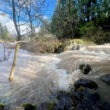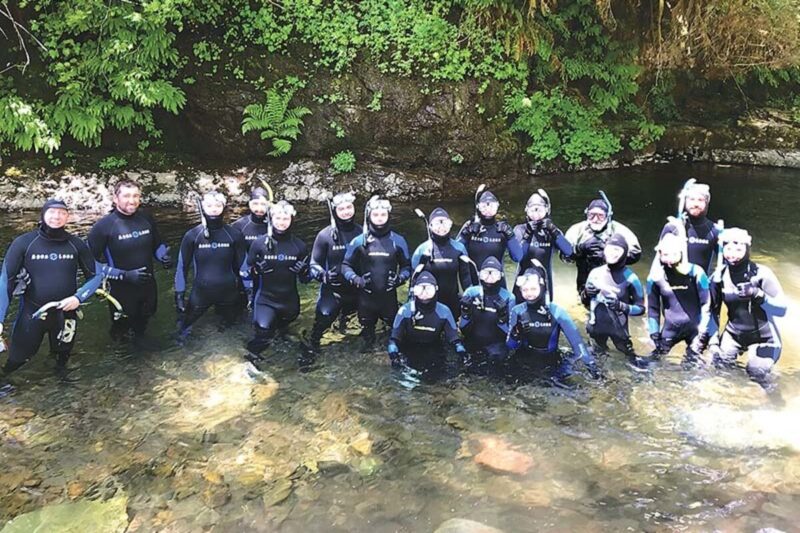Sean C. Morgan
Of The New Era
High school students from across the Mid-Willamette Valley are connecting with the local watershed in the most literal sense this summer, thanks to a program that puts them under the water with masks and snorkels, to explore local rivers.
Thanks to support from the Oregon Wildlife Foundation and the Forest Service Pacific Northwest Research Station for funding and Eugene Skin Divers Supply with a discount on equipment, the South Santiam Watershed Council has been able to purchase 20 complete snorkel set-ups with wetsuits.
“On June 5, we had our first group of (15) students from the Youth Watershed Council and Marine Science classes at Sweet Home High School out at House Rock Campground to snorkel in the South Santiam River,” said Watershed Council Education Coordinator Mike Vernon. “Student participants had the opportunity to explore their public lands, learn about freshwater ecosystems and their drinking water and discuss career paths with Forest Service biologists and staff from the SSWC and the Calapooia Watershed Council.”
“We went to House Rock to snorkel and learn about our watershed,” said student Megan Hager. “We learned about where our water comes from, what’s in it, and what our responsibilities are. Since we are located upriver of many other cities, we are very much in charge of keeping our water clean.
“After sitting down and learning about our watershed, we put on our snorkeling gear and got in. We examined macroinvertebrates that are sensitive to pollution and indicate water quality. We also found a small school of fish. Getting out of the classroom and into the water to learn about our watershed is an invaluable experience that I am thankful to have been part of.”
During the outings, the youths look around the riffles and pools, Vernon said. They’re asked to note what they see during a 45-minute session, and in some cases, they pull out specimens. During the sessions, they may find everything from sculpin and trout to the Pacific giant salamander.
Out of the water, they talk about the organisms and where they were found, Vernon said. They discuss their size and body shape and how those interact with their underwater homes. The macroinvertebrates tend to live in the riffles, while the trout wait in the pools to catch them moving downstream.
The experience hasn’t just been for local students. On June 24, the SSWC, CWC and Forest Service partnered with Oregon State University Extension and the 4H to bring 28 students from the Environmental Leadership for Youth program out to the South Santiam River for a snorkeling field trip.
The ELY program engages underserved junior high and high school students in leadership and career development training in environmental science through its annual camp at Oregon State University, Vernon said. Participating students came from across the Willamette Valley, Salem to Eugene, for a day of snorkeling and macroinvertebrate study.
The SSWC has 20 suits available. The Forest Service has 10, and the Calapooia council has 30. With 60 suits available, there’s a wide range of sizes for participants.
The idea for the program originated with Kristen Daley, education projects manager with the Calapooia council, and Erick Larkin, fish and wildlife biologist for the Sweet Home Ranger District. They got wind of a camp with a snorkeling component in the Chesapeake Bay in Maryland called North Bay.
The programs are trying to impress on the youths the connection between people and their watersheds, Vernon said. The curriculum used in the local program is the result of a joint effort with the Forest Service to create curriculum.
“We think we’re going to add maybe a survey component to it in the future,” Vernon said; and the SSWC plans to expand the program next school year to include additional student groups from Sweet Home and Lebanon school districts.





